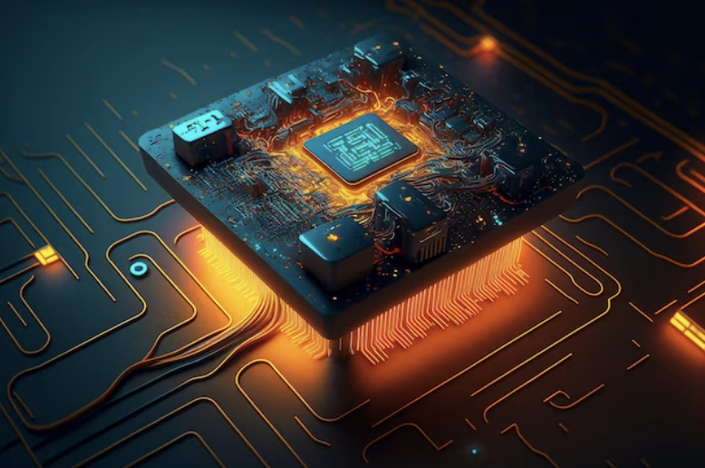
Flash Memory and EEPROM Drivers: A Hands-On Guide for Embedded Engineers
Implementing Memory Storage Solutions in Real-World Projects
Watch Promo
Through real-world case studies and hands-on exercises, you will gain the confidence to implement memory storage systems and troubleshoot common issues. The course offers an in-depth exploration of the architecture and organization of flash memory and EEPROM technology, as well as optimization techniques for performance and reliability.
Enroll today and take the first step towards becoming an expert in memory storage for embedded systems. With the Flash Memory and EEPROM Drivers: A Hands-On Guide for Embedded Engineers course , you'll be well on your way to building efficient and scalable memory storage solutions for your applications.
Here's a sneak peek at what you can expect to learn:
- Introduction to Embedded Memory Management
- Memory System Features in Embedded Systems
- Memory Map of Embedded Systems
- Connecting the Processor to Memory and Peripherals
- Memory Requirements and Endianness
- Data Alignment and Unaligned Data Access
- Bit-Band Operations and Advantages
- Memory Allocation
- Static Allocation
- Dynamic Allocation
- Memory Management Unit (MMU)
- Garbage Collection
- Introduction to flash memory
- Architecture and organization of flash memory
- Reading and writing to flash memory
- Implementing a flash memory driver for STM32F411 microcontroller
- Optimizing file system performance on flash memory
- Maintenance and troubleshooting of flash memory
- Overview of EEPROM Technology
- Introduction to the AT24XX EEPROM Family
- Features and Specifications of the AT24XX EEPROM
- Reading and Writing Data to the AT24XX EEPROM
- Devloping bare-metal driver for the AT24XX EEPROM
- Maximizing Performance and Reliability of the AT24XX EEPROM
- Introduction to the W25Q32, W25Q64, and W25Q128
- Capacity and Features of the W25Q32, W25Q64, and W25Q128
- Using the W25Q32, W25Q64, and W25Q128 in Embedded Systems
- Benefits and Limitations of W25Q32, W25Q64, and W25Q128
- Developing bare-metal drivers for W25Q32, W25Q64, and W25Q128 Flash
Don't let memory storage issues slow you down. Enroll in "Flash Memory and EEPROM Drivers: A Hands-On Guide for Embedded Engineers"
Frequently Asked Questions
Course Curriculum
-
StartNotice
-
StartImportant information about this section
-
StartProgramming : Enabling the Floating Point Unit (FPU) (18:00)
-
StartProgramming : Developing a UART Driver - Analyzing the Documentation (11:35)
-
StartProgramming : Developing a UART Driver - Listing out the steps (4:00)
-
StartProgramming : Developing a UART Driver - Implementing the Init. function (22:13)
-
StartProgramming : Developing a UART Driver - Implementing the Write function (5:39)
-
StartProgramming : Developing a UART Driver - Testing the Driver (6:39)
-
StartProgramming : Developing the System Timebase - Analyzing the Documentation (8:28)
-
StartProgramming : Developing the System Timebase - Implementing the Init. function (9:52)
-
StartProgramming : Developing the System Timebase - The rest of the functions (12:15)
-
StartProgramming : Developing the System Timebase - Testing the Timebase (5:34)
-
StartProgramming : BSP : Listing the out the Required Functions (7:55)
-
StartProgramming : Writing the LED Driver (5:01)
-
StartProgramming : Writing the PushButton Driver (4:00)
-
StartProgramming : Testing the Board Support Package (3:35)
-
StartProgramming : Analyzing the Documentation (5:21)
-
StartProgramming : Listing out the steps for developing the ADC Driver (5:27)
-
StartProgramming : Writing the ADC Initialization function (13:21)
-
StartProgramming : Writing the ADC Read function (14:05)
-
StartProgramming : Analyzing the Documentation for the SPI Driver (7:34)
-
StartProgramming : Intializing the GPIO Pins for SPI (11:00)
-
StartProgramming : Implementaing Structures for Configruation Parameters (15:29)
-
StartProgramming : Configuring the Parameters (15:41)
-
StartProgramming : Writing the SPI Initialization function (14:55)
-
StartProgramming : Writing the SPI Transmit Function (Pt.1) (9:27)
-
StartProgramming : Writing the SPI Transmit Function (Pt.2) (10:26)
-
StartProgramming : Transmitting 16-bit Data (17:54)
-
StartProgramming : Transmitting 8-bit Data (6:46)
-
StartProgramming : Receiving Data (11:05)
-
StartProgramming : Testing the SPI Driver (15:47)
-
StartProgramming : Analyzing the Documentation for the I2C Driver (10:47)
-
StartProgramming : I2C : The GPIO Initialization (10:35)
-
StartProgramming : Configuring the I2C Parameters (10:22)
-
StartProgramming : Implementing the I2C Read function (13:44)
-
StartProgramming : Implementing the I2C Burst Read function (7:25)
-
StartProgramming : Implementing the I2C Write functions (10:17)
-
StartProgramming : Extending the SPI Driver (16:00)
Your Instructor
EmbeddedExpertIO represents a vibrant collective dedicated to the mastery of sophisticated embedded systems software development for professionals.
Our core objective is to equip individuals and organizations with the indispensable skills to thrive in the swiftly evolving embedded systems sector. We achieve this by providing immersive, hands-on education under the guidance of seasoned industry specialists. Our ambition is to emerge as the favored learning platform for embedded systems development professionals across the globe.
